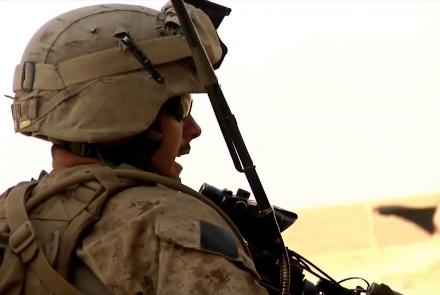Sixteen years have passed since the United States launched a military strike in Afghanistan to topple the Taliban regime and destroy al-Qaeda network and its affiliates. But the US is still bogged down in its longest war in the country in the wake of ongoing insurgency and rising violence.
The Afghan war so far has claimed the lives nearly 2,400 US military personnel while another 20,000 soldiers sustained injuries.
On 11 September 2011, militants associated to al-Qaeda network carried out a number of deadly attacks in the United States which are described unprecedented in the U.S history. The attacks on the World Trade Center (TWO) twin towers in New York and Washington caused extensive death and destruction and triggered an enormous US efforts to expedite campaign against terrorism.
Later on, the then US president Georg W. Bush asked the Taliban to handover al-Qaeda leader Osama Bin Laden to the US over his involvement in the 9/11 attacks. But the Taliban failed to meet the US demands, a move that angered the US government and paved the way for a military intervention against the hardline movement.
On October 7, 2001 Bush in a televised address to the American people announced the start of a military strike against the Taliban and al-Qaeda bases in Afghanistan as part of his campaign against terrorism.
“On my orders, the United States military has begun strikes against al-Qaeda terrorist training camps and military installations of the Taliban regime in Afghanistan. These carefully targeted actions are designed to disrupt the use of Afghanistan as a terrorist base of operations and to attack the military capability of the Taliban regime,” Bush said his address to the American public.
But everything did not go according to the expectations the Bush administration had from the war on the Taliban. Thousands of Afghan civilians and military personnel were killed and wounded as a result of the continued insurgency in the country in the post-Taliban era. By 2009, more than one thousand US soldiers had been killed during the war and violence in Afghanistan.
Later on, Bush successor Barack Obama sworn in office as US president. The Obama administration also inherited a totally violent Afghanistan where the Taliban as potent militant group was trying to gain new grounds across the country. Continued violence in the country forced Obama to bring some changes in the US war strategy on Afghanistan. On 30 November 2009, Obama ordered deployment some additional 30,000 troops to Afghanistan.
"There is no imminent threat of the government being overthrown, but the Taliban has gained momentum. Al Qaeda has not re-emerged in Afghanistan in the same numbers as before 9/11, but they retain their safe-havens along the border,” Obama said in December 2009.
At the same time, Obama had pledged to start reducing the number of US troops in Afghanistan.
But, now the incumbent President Donald Trump says that the callback of US forces from Iraq was a mistake and that it should not be repeated in Afghanistan.
“The vacuum we created by leaving too soon gave safe haven for ISIS to spread, to grow, recruit, and launch attacks. We cannot repeat in Afghanistan the mistake our leaders made in Iraq,” Trump said.
“Someday, after an effective military effort, perhaps it will be possible to have a political settlement that includes elements of the Taliban in Afghanistan, but nobody knows if or when that will ever happen. America will continue its support for the Afghan government and the Afghan military as they confront the Taliban in the field,” added Trump.

